
Charles Perrault was a French author and member of the Académie Française. He laid the foundations for a new literary genre, the fairy tale, with his works derived from earlier folk tales, published in his 1697 book Histoires ou contes du temps passé. The best known of his tales include "Le Petit Chaperon Rouge", "Cendrillon" ("Cinderella"), "Le Maître chat ou le Chat botté", "La Belle au bois dormant", and "Barbe Bleue" ("Bluebeard").

Jean Charles Emmanuel Nodier was a French author and librarian who introduced a younger generation of Romanticists to the conte fantastique, gothic literature, and vampire tales. His dream related writings influenced the later works of Gérard de Nerval.

Anne Claude de Tubières-Grimoard de Pestels de Lévis, comte de Caylus, marquis d'Esternay, baron de Bransac, was a French antiquarian, proto-archaeologist and man of letters.
Fantastique is a French term for a literary and cinematic genre and mode that is characterized by the intrusion of supernatural elements into the realistic framework of a story, accompanied by uncertainty about their existence. The concept comes from the French literary and critical tradition, and is distinguished from the word "fantastic", which is associated with the broader term of fantasy in the English literary tradition. According to the literary theorist Tzvetan Todorov, the fantastique is distinguished from the marvellous by the hesitation it produces between the supernatural and the natural, the possible and the impossible, and sometimes between the logical and the illogical. The marvellous, on the other hand, appeals to the supernatural in which, once the presuppositions of a magical world have been accepted, things happen in an almost normal and familiar way. The genre emerged in the 18th century and knew a golden age in 19th century Europe, particularly in France and Germany.

Antoine Galland was a French orientalist and archaeologist, most famous as the first European translator of One Thousand and One Nights, which he called Les mille et une nuits. His version of the tales appeared in twelve volumes between 1704 and 1717 and exerted a significant influence on subsequent European literature and attitudes to the Islamic world. Jorge Luis Borges has suggested that Romanticism began when his translation was first read.

Jean-Marie-Mathias-Philippe-Auguste, comte de Villiers de l'Isle-Adam was a French symbolist writer. His family called him Mathias while his friends called him Villiers; he would also use the name Auguste when publishing some of his books.
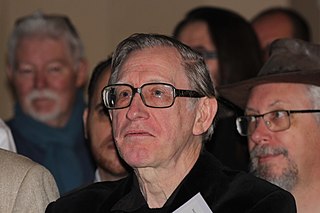
Brian Michael Stableford was a British academic, critic and science fiction writer who published more than 70 novels and over a hundred volumes of translations. His earlier books were published under the name Brian M. Stableford, but later ones dropped the middle initial and appeared under the name Brian Stableford. He also used the pseudonym Brian Craig for some of his very early and late works. The pseudonym derives from the first names of himself and of a school friend from the 1960s, Craig A. Mackintosh, with whom he jointly published some very early work.
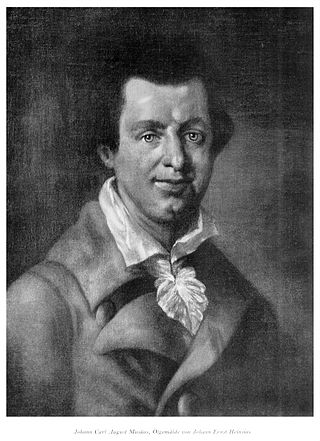
Johann Karl August Musäus was a German author. He was one of the first collectors of German folk stories, most celebrated for his Volksmärchen der Deutschen (1782–1787), a collection of German fairy tales retold as satires.

Jean Ray is the best-known pseudonym among the many used by Raymundus Joannes de Kremer, a prolific Belgian (Flemish) writer. Although he wrote journalism, stories for young readers in Dutch by the name John Flanders, and scenarios for comic strips and detective stories, he is best known for his tales of the fantastique written in French under the name Jean Ray. Among speakers of English, he is famous for his macabre novel Malpertuis (1943), which was filmed by Harry Kümel in 1971. He also used the pseudonyms King Ray, Alix R. Bantam and Sailor John, among others.
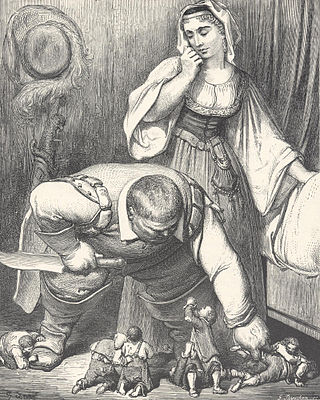
Hop-o'-My-Thumb (Hop-on-My-Thumb), or Hop o' My Thumb, also known as Little Thumbling, Little Thumb, or Little Poucet, is one of the eight fairytales published by Charles Perrault in Histoires ou Contes du temps passé (1697), now world-renowned. It is Aarne-Thompson type 327B. The small boy defeats the ogre. This type of fairytale, in the French oral tradition, is often combined with motifs from the type 327A, similar to Hansel and Gretel; one such tale is The Lost Children.
Maurice Level was a French writer of fiction and drama who specialized in short stories of the macabre which were printed regularly in the columns of Paris newspapers and sometimes staged by le Théâtre du Grand-Guignol, the repertory company in Paris's Pigalle district devoted to melodramatic productions which emphasized blood and gore.
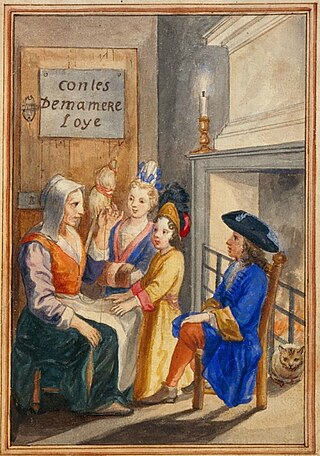
Histoires ou contes du temps passé, avec des moralités or Contes de ma mère l'Oye is a collection of literary fairy tales written by Charles Perrault, published in Paris in 1697. The work became popular because it was written at a time when fairy tales were fashionable amongst aristocrats in Parisian literary salons. Perrault wrote the work when he retired from court as secretary to Jean-Baptiste Colbert, minister to Louis XIV of France. Colbert's death may have forced Perrault's retirement, at which point he turned to writing. Scholars have debated as to the origin of his tales and whether they are original literary fairy tales modified from commonly known stories, or based on stories written by earlier medieval writers such as Boccaccio.

The French writer and folklore collector Henri Pourrat was born in 1887 in Ambert, a town in the mountainous Auvergne region of central France. He died near Ambert in 1959.
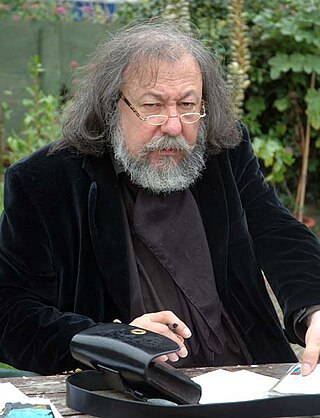
Pierre Dubois, is a French specialist in fairy tales and folklore. He is an author, Franco-Belgian comics scriptwriter, and lecturer on fairies and little people in France. His style of fantasy is primarily Anglo-Saxon, after the manner of authors such as Bram Stoker, Mary Webb and Charlotte Brontë. He coined the term elficology (elficologie) as a name for the study of the "little people", originally as a joke. Fascinated at a young age by fairy tales and fairytale fantasy, he became an illustrator after studying the fine arts for a short period. His first comic book was published in 1986. Since then he has produced one comic book a year and made regular appearances on television and at conferences relating to fairy tales, dreams, and legends related to fairies. Because of his encyclopedias of fairies, imps, and elves, published in the 1990s, Dubois won international recognition as a French specialist in magic.

"The Devil in the Belfry" is a satirical short story by Edgar Allan Poe. It was first published in 1839.
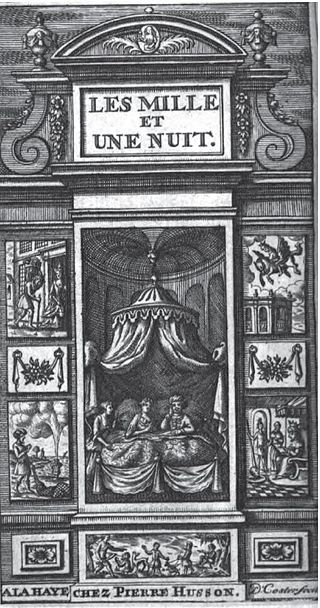
Les mille et une nuits, contes arabes traduits en français, published in 12 volumes between 1704 and 1717, was the first European version of The Thousand and One Nights tales.
The conte cruel is, as The A to Z of Fantasy Literature by Brian Stableford states, a "short-story genre that takes its name from an 1883 collection by Villiers de l'Isle-Adam", although previous examples had been provided by such writers as Edgar Allan Poe. Some critics use the label to refer only to non-supernatural horror stories, especially those that have nasty climactic twists, but it is applicable to any story whose conclusion exploits the cruel aspects of the 'irony of fate.' The collection from which the short-story genre of the conte cruel takes its name is Contes cruels by Villiers de l'Isle-Adam. Also taking its name from this collection is Contes cruels, a two-volume set of about 150 tales and short stories by the 19th-century French writer Octave Mirbeau, collected and edited by Pierre Michel and Jean-François Nivet and published in two volumes in 1990 by Librairie Séguier.
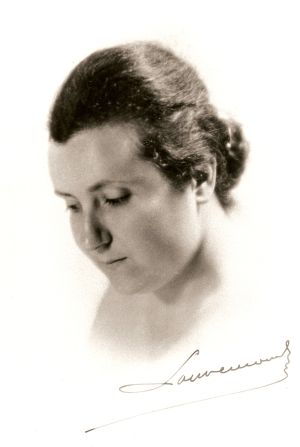
Jeanne Scelles-Millie was a French architectural engineer and author who was born in Algeria and lived there until it gained independence from France. She was interested in inter-faith dialog between Christians, Jews and Muslims. She published several collections of North African folk tales and legends. She and her husband Jean Scelles were active in fighting prostitution.

Le Foyer breton is a collection of Breton stories by Émile Souvestre, written in French and published in 1844. This work is a collection of Breton folktales arranged by their place of origin. It was an immediate success, becoming the foremost work of prose narrative in Brittany and inspiring several of the writer Ernest du Laurens de la Barre's works. It has been republished several times.
Suzanne Andrei Nelly Benguigui Platiel was an Algerian-born French ethnolinguist and Africanist from the French National Centre for Scientific Research.















